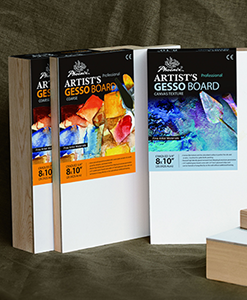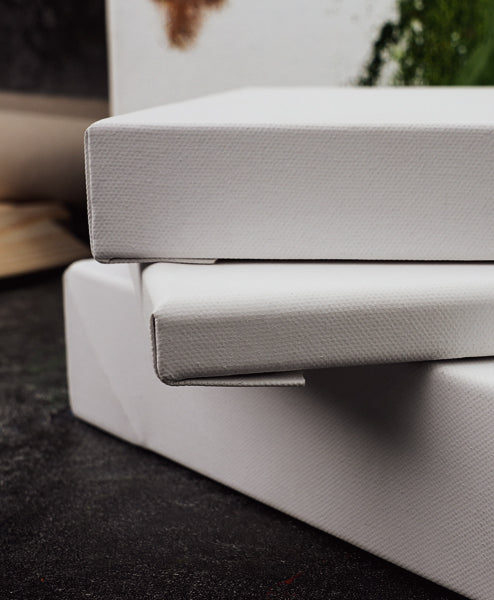Oil paint sticks, also known as oil sticks or pigment sticks, represent a fascinating hybrid in the world of art materials—one that bridges the gap between the fluidity of traditional oil paints and the immediacy of drawing tools like pastels. These solid bars of color allow artists to apply rich, buttery pigment directly to a surface, offering a tactile experience that encourages spontaneity and experimentation. For procurement professionals sourcing high-quality art supplies, oil paint sticks provide a versatile option that can be integrated into bulk projects, such as large-scale murals or educational kits. At Phoenix Art Supplies, we specialize in watersoluble oil paint sticks, which combine the depth of oil with the convenience of water cleanup, making them ideal for B2B clients who require scalable solutions without compromising on quality. In this guide, we'll delve into the essentials of oil paint sticks, exploring their composition, history, techniques, and applications, while highlighting how they fit into modern artistic practices. Whether you're a seasoned painter or a wholesaler stocking for studios, understanding these tools can elevate your work and streamline your supply chain.
What Are Oil Paint Sticks?
Oil paint sticks are essentially oil paint in solid form, molded into convenient, crayon-like bars that can be held in the hand and applied directly to a canvas or other surface. Unlike liquid oil paints, which require brushes, palettes, and solvents for application and cleanup, oil paint sticks offer a more direct, mess-free approach. They consist of high-quality pigments ground into a mixture of drying oils (such as linseed or safflower oil) and waxes (often beeswax or mineral wax), which gives them their firm yet creamy consistency. This formulation allows the sticks to dry through oxidation, just like traditional oils, forming a flexible film that resists cracking over time.
The appeal of oil paint sticks lies in their versatility. Artists can draw bold lines, scumble for textured effects, or even blend them with fingers or tools for painterly results. For example, a single stick can be used to sketch an underdrawing and then built up into impasto layers, creating depth and dimension without needing multiple tools. At Phoenix, our watersoluble oil paint sticks take this a step further by incorporating emulsifiers that allow cleanup with just water and soap, eliminating the need for harsh turpentine or mineral spirits. This makes them particularly suitable for educational environments or professional studios where safety and efficiency are paramount. In terms of size, most oil paint sticks come in standard formats like 38ml or 96ml bars, available in sets of 6 to 12 colors or individually for custom palettes. Brands like Sennelier, R&F Handmade Paints, and Shiva (now part of Jack Richeson) dominate the market, each offering unique formulations—Sennelier for its glossy finish, R&F for creamy texture, and Shiva for affordability without sacrificing quality.
One key distinction is between traditional oil paint sticks and watersoluble variants. Traditional sticks dry slowly (1-7 days depending on thickness and humidity), allowing for extended working time, while watersoluble ones maintain similar handling but offer easier maintenance. For B2B clients, this means Phoenix's sticks can be ordered in bulk with customized color assortments, integrating seamlessly with our canvas roll materials for complete project kits.
The History of Oil Paint Sticks
The development of oil paint sticks traces back to the mid-20th century, born from artists' desire for a more portable and expressive alternative to tube paints. Picasso is often credited with pioneering the concept in 1949, collaborating with Sennelier to create the first commercial oil sticks. He sought a medium that combined the richness of oil with the directness of drawing, allowing him to work en plein air without the hassle of brushes and palettes. This innovation quickly caught on, influencing post-war abstract expressionists like Willem de Kooning and Jackson Pollock, who appreciated the sticks' ability to create gestural marks and thick impasto.
By the 1960s, brands like Shiva introduced more affordable versions, expanding accessibility for students and hobbyists. R&F Handmade Paints, founded in 1988, elevated the medium with artisanal, pigment-dense formulations that appealed to fine artists. The introduction of watersoluble oil paint sticks in the late 20th century marked another milestone, addressing environmental concerns by reducing solvent use. Today, oil paint sticks are integral to contemporary practices, from street art to printmaking, with global production emphasizing lightfastness and non-toxicity.
At Phoenix Art Supplies, we build on this history by offering watersoluble oil paint sticks that honor traditional techniques while incorporating modern innovations. Our products are designed for longevity, with pigments rated ASTM I or II for fade resistance, ensuring they stand the test of time in professional applications. For wholesalers, this historical context underscores the enduring demand—oil paint sticks have evolved from niche tools to essential art supplies, with market growth projected at 5-7% annually through 2030, driven by eco-friendly variants.
Composition and How Oil Paint Sticks Work
At their core, oil paint sticks are a blend of finely ground pigments suspended in a binder of drying oils and waxes. The pigments provide color and opacity, while the oils (linseed for yellowing resistance or safflower for clarity) facilitate slow drying through oxidation. Waxes add solidity, preventing the stick from being too soft or brittle. This composition results in a medium that behaves like oil paint once applied—blendable when wet, permanent when dry—but with the convenience of a solid form.
The drying process is crucial: thin layers skin over in hours but take days to cure fully, allowing artists to rework surfaces without disturbing underlying layers. Thicker applications can take weeks, making ventilation essential to avoid cracking. Unlike acrylics, which dry by evaporation, oil paint sticks form a flexible film that's resistant to environmental changes, ideal for archival work.
Phoenix's watersoluble oil paint sticks modify this formula with emulsifiers, allowing the binder to mix with water for cleanup while retaining oil's luminosity. This innovation reduces health risks associated with solvents, making them suitable for classrooms or shared studios. In terms of pigment load, our sticks contain up to 60% pigment by weight, ensuring intense color payoff even in thin applications. For B2B clients, we offer customization, such as adjusting wax ratios for softer or firmer sticks, tailored to specific project needs like large-scale canvas work.
When compared to traditional oil paints, oil paint sticks eliminate the need for mediums or thinners in initial stages, promoting a more intuitive process. However, they can be thinned with turpentine for glazing effects or mixed with tube oils for hybrid techniques. Safety is a consideration—always use in well-ventilated areas and avoid ingestion, as some pigments (e.g., cadmium) are toxic.
Oil Paint Sticks vs. Oil Pastels: Key Differences and Similarities
Oil paint sticks and oil pastels are often confused, but they differ fundamentally in composition and behavior. Oil pastels are made from pigments mixed with non-drying mineral oil and wax, resulting in a soft, waxy medium that never fully dries. This makes them excellent for layering and blending but unsuitable for varnishing or long-term stability, as they remain susceptible to smudging.
In contrast, oil paint sticks use drying oils, allowing them to cure into a hard, paint-like film. This means oil paint sticks can be varnished, layered with traditional oils, or used in mixed media without fear of perpetual softness. Similarities include their stick form and direct application—both encourage expressive mark-making and portability. However, oil paint sticks offer greater compatibility with canvases, providing the depth and luminosity of oils, while oil pastels lean toward drawing effects with a matte finish.
For artists transitioning from pastels, oil paint sticks feel more painterly, with a buttery consistency that glides on primed surfaces. Pastels, being non-drying, are better for quick sketches or works under glass. At Phoenix, our watersoluble oil paint sticks further differentiate by offering water cleanup, a feature absent in both traditional sticks and pastels, making them a bridge for watercolorists exploring oils.
Choosing between them depends on the project: oil paint sticks for permanent, gallery-ready pieces; oil pastels for exploratory or framed works. Many artists use both—pastels for underdrawing, sticks for buildup—creating hybrid textures that enhance creativity.
Techniques for Using Oil Paint Sticks
Oil paint sticks shine in their adaptability, allowing a range of techniques from drawing to painting. Start by removing the skin (a thin oxidized layer) with a palette knife to reveal fresh pigment. Apply directly to a primed canvas for bold strokes, or use fingers for blending, creating soft gradients. For impasto effects, build thick layers—up to 1mm to avoid cracking. Thinning with turpentine or linseed oil turns sticks into glazes, ideal for translucent washes over underpaintings.
Sgraffito is a favorite technique: scratch through wet layers with a tool to reveal colors below, adding texture. For printmaking, rub sticks onto plates for monotypes, transferring rich impressions. On non-porous surfaces like metal or glass, sticks create encaustic-like effects when heated. Drying time varies: thin applications skin in hours, full cure in days to weeks—accelerate with cobalt driers if needed.
Phoenix's watersoluble oil paint sticks expand these techniques, allowing water-based blending for watercolor-like effects before drying to oil permanence. Pair with our canvas rolls: linen for textured oils, cotton for smooth sketching, polyester for waterproof prints. For B2B, we recommend testing in small batches to match project scales, ensuring compatibility with gesso boards for professional results.
Advanced tips include mixing sticks with tube oils for custom palettes or using them in collage for added dimension. Always store in cool, dry places to prevent melting, and clean tools promptly to avoid buildup.
Applications and Project Ideas with Oil Paint Sticks
Oil paint sticks are versatile across mediums, from fine art to commercial design. In studio painting, use them for quick plein air sketches, building layers on canvas for abstract expressions. Their portability makes them perfect for travel kits—no spills, just direct application.
For murals, sticks enable large-scale mark-making, blending colors on-site without palettes. Printmakers appreciate their use in monotypes, rubbing onto plates for vibrant transfers. In mixed media, combine with charcoals or acrylics for textured collages, or layer over photographs for photo-realistic enhancements.










